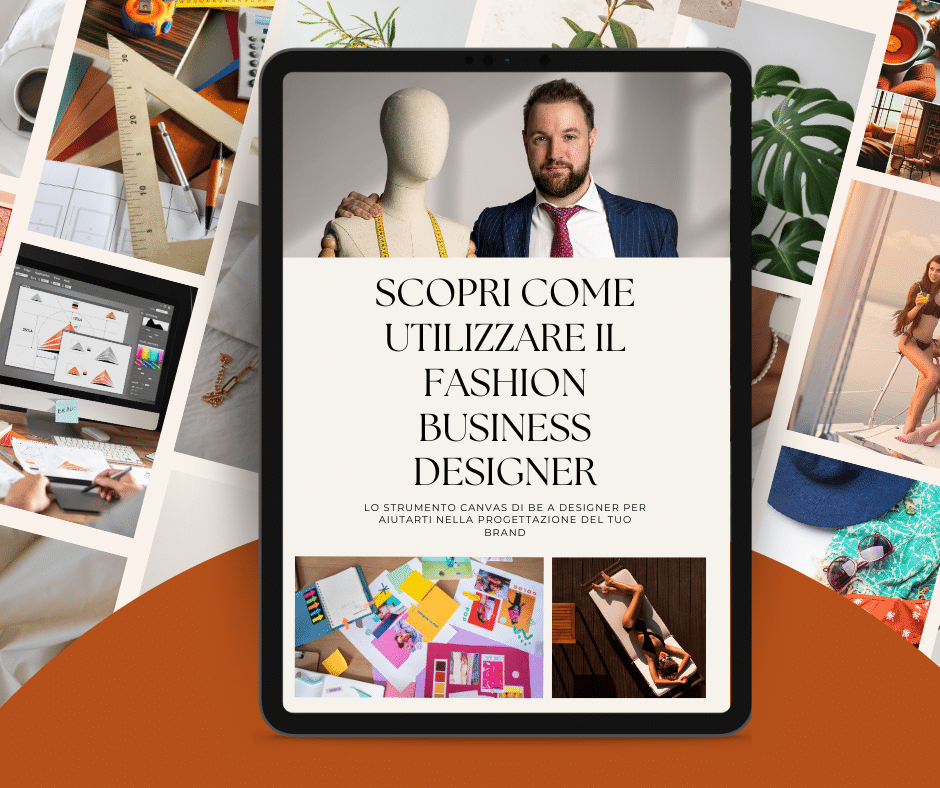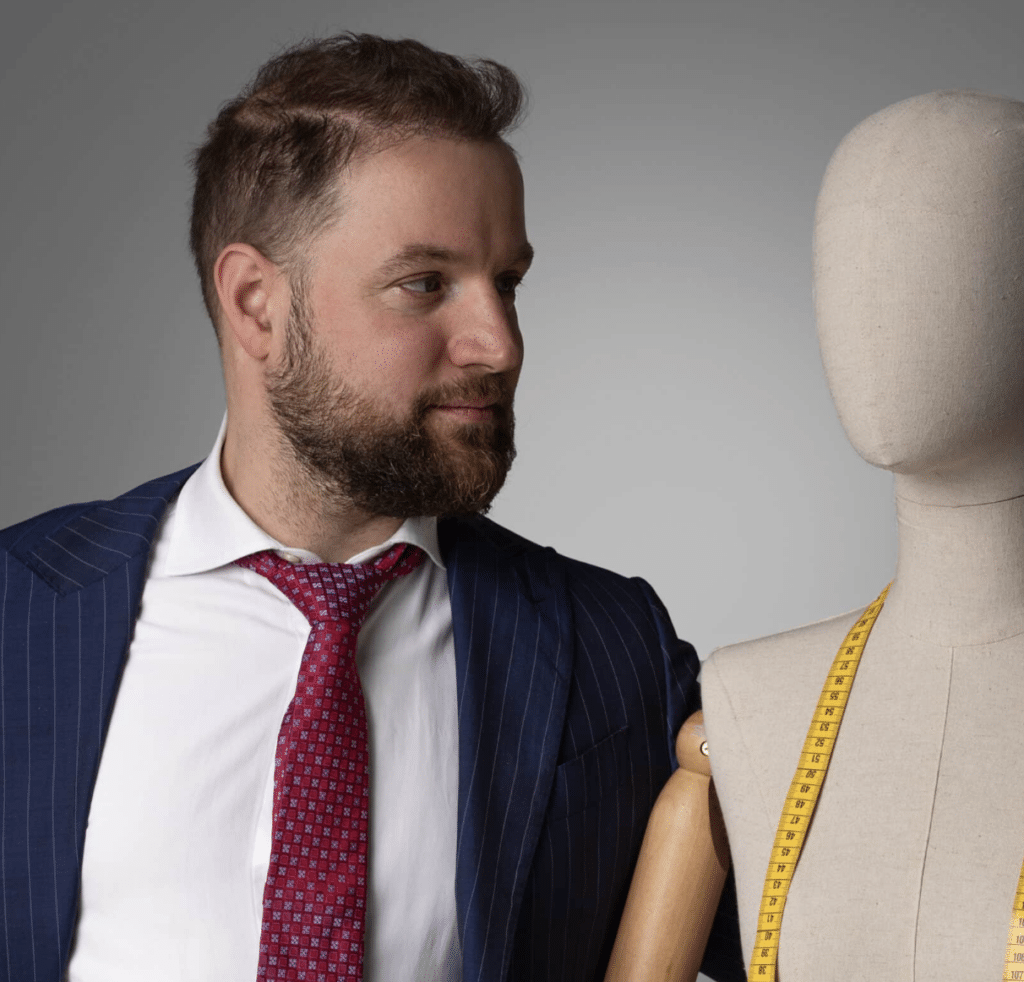Among the many things we Italians are good at (and are recognised worldwide), fashion undoubtedly stands out. Even without being great experts or true aficionados, we can easily name many fashion designers: Giorgio Armani, Miuccia Prada, Salvatore Ferragamo and so on, fascinating stories of people who, with their charisma and special artistic sensibility, combined with undisputed entrepreneurial skills, have managed to emerge and make their brands flourish.
What is incredible is that these brands will most likely continue to thrive without the artistic direction and 'physical' presence of their legendary founder for countless years to come. How is this possible? In this article I will try to gather some factors that make a brand successful. Let's start with the most important, the starting point without which fashion could not exist: the designer.
The question arises: "Who is a designer?"
The fashion designer is one of those figures present in our collective imagination and enveloped in an aura of unquestionable fascination; he is often seen as a creative, a visionary, a provocateur, who through his creations or his particularly extravagant and controversial personality manages to make people talk about him (for better or for worse), enjoying the fruits of his work with a star-studded life, always surrounded by actors, public figures, artists and so on.
This is undoubtedly the most 'glossy' reality that, with an ounce of envy, makes us dream of one day reaching such heights.
Then there is the technical part and the 'creative' part. The stylist in most cases is the one who 'thinks', 'creates sketches', 'interprets moods' and like all good artists has his own workshop, his atelier, where behind a sewing machine, juggling patterns, mannequins and fabrics he gives life to his creations.
Here another question might arise: 'even a good tailor can sew and create beautiful clothes. What is the real difference with a stylist?" the most obvious answer would be:
"The designer becomes a designer because during his training he studies fashion while a tailor does not".
In fact, there is no answer more wrong!
In Italy we undoubtedly have some of the best-rated fashion and design schools in the world, which provide excellent training for those who attend them, but it is not the preparation itself that makes the difference. Maybe you too, like me, attended university and brought home a degree, maybe you wanted to exaggerate and added a master's degree and various training courses. And then what happened? When you arrived in the working world, you realised that there was a big difference between theory and practice. That's exactly how it is in fashion too.
What makes the difference between a tailor and a designer is the product, and we are not talking about clothes or accessories.
"A designer does not create garments, he creates business models".
What all the greatest fashion designers in history have in common is that they have been not only great creators but also great entrepreneurs, and that they have combined their artistic sensitivity, their mastery of taste and their research into the choice of fabrics, patterns and cuts in a skilfully blended alchemy: the creation of a brand.
I would like to emphasise this: probably none of them were born entrepreneurs and probably none of them thought of creating a brand for money or mere profit, but rather to follow an intuition, a passion that, perhaps, they would not have even imagined how far it would take them. And, in time, entrepreneurs they became.
None of them would have achieved success if they had not been able to tell the world about their uniqueness and personality behind every collection, style choice and garment, but above all, they would not have achieved fame and recognition if they had not been able to sell their creations.
All this was done by creating a winning asset, building their 'personal branding' and putting their face to it as stylists, telling their story, highlighting their character, taste and distinctive traits that made them different and unique from one another.
This is why, a full 46 years after Coco Chanel's death (1971), Chanel is still a prestigious, widely known and successful brand. The myth of the founder still towers above the names of all the designers who succeeded each other as artistic directors and who later found fame by creating their own personal branding! One example for all is Karl Lagerfeld.
Since you have come this far and this is my first article, it is time to introduce myself: I am Corrado Manenti, I work in marketing and I am a 'designer of designers'. What do I do? I help designers or would-be designers to build their brand and compete with the market. I am not a designer, but you probably already realised that: I think I would have difficulty even sewing on a button, let alone using a sewing machine! However, these are all useful tools and skills that, whether you feel more like a 'tailor', a 'stylist' or just curious, it is important to have, master and perfect more and more. My work, on the other hand, focuses on the idea. Because it's not enough to be 'good' (that always helps) and to have a good intuition, we are in a world in fact where there are people who are technically very good and so many ideas that it is difficult to be original. What makes the difference between someone who wants to be a designer and build his own brand with time and hard work and someone who creates garments or accessories for his own personal satisfaction is the mental process.
The real difference, therefore, between a tailor (or any kind of craftsman 'good at something') and a designer/entrepreneur in the fashion industry is a matter of 'mindset', of 'vision of things', specifically the whole strategy that is built downstream, which includes a solid marketing base, cost analysis, business plan creation and so on.
These things are usually not taught in any course, let alone in academies and fashion schools, because there are two macro beliefs that lead to ruin and premature defeat those who want to become fashion designers:
The exaltation of creative intuition for its own sakewith no real connection to the market. We live in a hyper-communicative world, we are constantly bombarded with information and most people, statistics in hand, no longer even go shopping in shops but choose, buy and discover what they want in the vast sea of the internet. It is no longer possible to think of creating fashion without knowing the distribution channels and buying behaviour of potential customers, just as it is no longer possible to think that it is enough to make 'nice things' that eventually someone will buy them. This mentality is typical of shopkeepers, who have a door to the world and depending on the area of the city where their shops are located, all they do is wait for 'sooner or later' someone to come in and maybe even buy something. It is no wonder that in small and medium-sized towns these types of businesses have gone through an inevitable crisis.
The 'artist' mentalityi.e. to expect that the creation in itself of an object (a garment, an accessory whatever) will automatically be enough to communicate its value and above all enable us to sell it. The problem (it is history that teaches us this) is that an artist's ultimate goal is rarely to make money from the sale of his or her work, and most of the artists we all adore (Van Gogh and Caravaggio, to name but two) have only had their full recognition posthumously, and a troubled and controversial life, to say the least.
The lesson that comes to us from history is that the recognition of our 'role' and 'our' creations comes from others, from our customers, from those who appreciate our philosophy of life and creation and buy and wear one of our garments precisely in order to 'feel part' of it; this is only possible if we have known how to compare our idea with people, in the real world, we have known how to satisfy a need, for exclusivity, belonging, and so on. Perhaps we knew how to choose the right materials, the right suppliers, we were careful not to spend too much or too little, we made sure that our shop window did not just look out onto a village street but onto the world.
This is the way of those who want to make fashion, it is only the tools and places that change and evolve. Eventually, if you can make others understand the value of your ideas infused in your creations, you will automatically be identified as the creator, the one who had the idea, the founder. Let us always remember Coco Chanel, who at the time of her official consecration said that throughout her career she had been 'just a simple seamstress'.

Do you want to develop your own capsule collection?
We can help you design it, produce it and sell it with our all-inclusive package


















